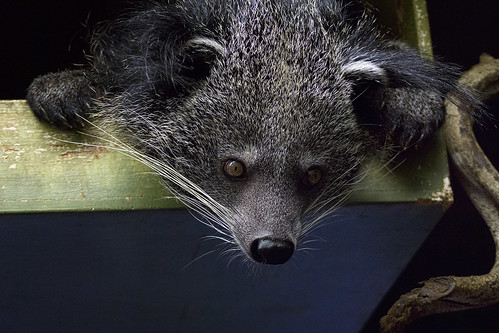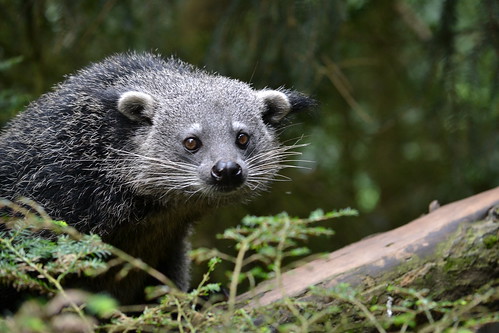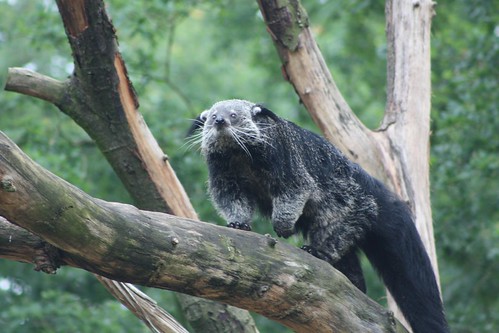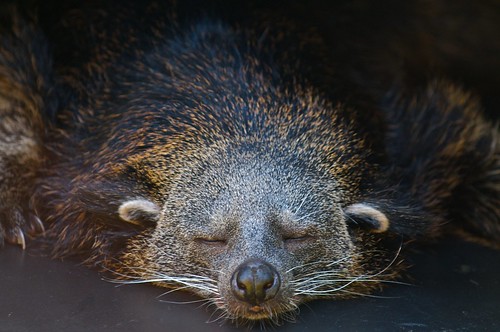Last summer Jason and I got to meet one up close at the San Diego Zoo, during their backstage pass tour. You never know what animals you'll get to meet during the tour, but I was really hoping to meet the binturong. They're so awesome! Let's learn some interesting info about the binturong!
 by hehaden
by hehaden The Binturong is a mammal from South-East Asia.
Binturongs are in the same family as the civet, fossa, and the mongoose. They all have long snouts and more teeth than most mammals who are carnivores.
Binturongs are in the same family as the civet, fossa, and the mongoose. They all have long snouts and more teeth than most mammals who are carnivores.
It is unknown what the meaning of the word binturong is.
 by jinterwas
by jinterwas Binturongs are also known as Bearcats, but they are not related to cats or bears.
Although binturongs are not related to bears, they do walk flat footed just like bears and people.
Although the binturongs is a carnivore, most of their diet is made up of fruit. They also eat birds, insects and fish.
Binturongs have course shaggy fur. It is dark brown to black and the ends are tipped with gray. They also have tufts of dark hair around their ears and long white whiskers.
The tip of the binturongs tail is prehensile. The only other carnivorous mammal with a prehensile tail is the Kinkajou.
The tip of the binturongs tail is prehensile. The only other carnivorous mammal with a prehensile tail is the Kinkajou.
 by Kieran (AU)
by Kieran (AU) Binturongs have a scent gland under their tail. Their tails help them keep their balance as they walk among the branches, while at the same time marking territory.
The scent the gland produces smells very much like buttered popcorn.
Binturongs make a lot of noises including chuckles, wails, growls, grunts, hisses. They also purr.
Female Binturongs can be up to 20% bigger and heavier than the males.
Binturongs have 1-3 cubs. They are about the size of a average human fist.
Female Binturongs can be up to 20% bigger and heavier than the males.
Binturongs have 1-3 cubs. They are about the size of a average human fist.
 by zanthrax-dot-nl
by zanthrax-dot-nl Binturongs are great climbers! They are too big to leap between trees so they have to climb up and down to get from tree to tree.
They spend most of their time in trees, moving slowly and using their prehensile tail for extra stability.
Binturongs can rotate their hind legs backwards, making it easier to climb down trees head first. Having semi retractable claws also helps
Binturongs like to live by slow moving water sources. They can swim and dive and like to use the water to cool down.
The biggest threat to binturongs in the wild is humans and habit loss.
The biggest threat to binturongs in the wild is humans and habit loss.










